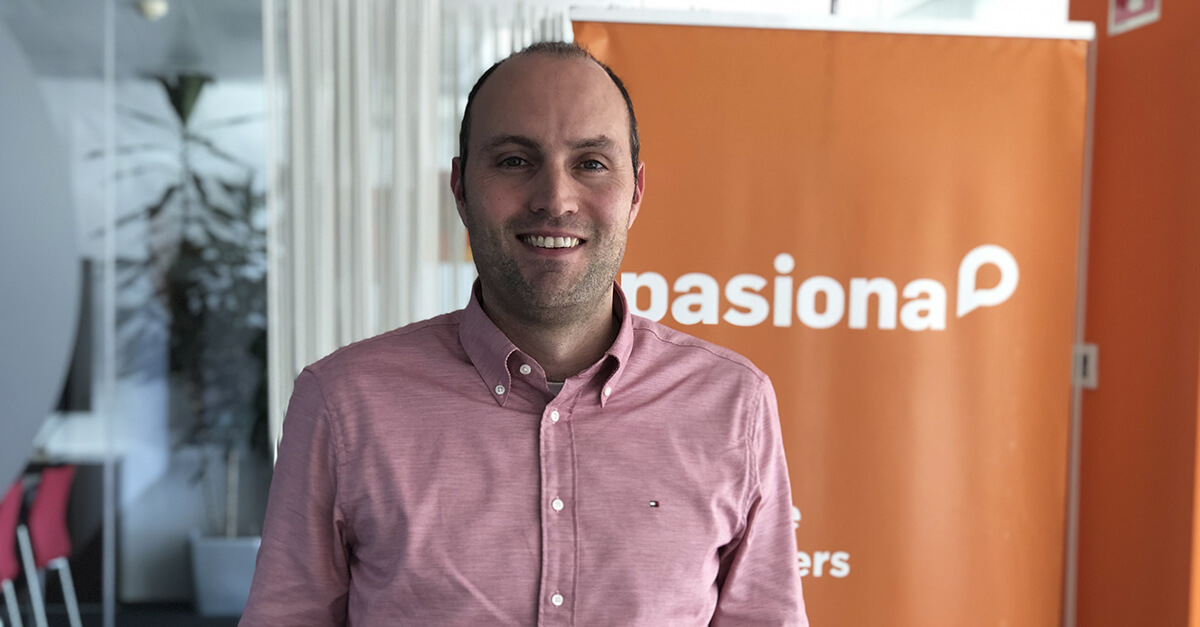Raúl Lendínez: “95% of companies talk about success in their projects with Agile”

Leadership, Management, SCRUM… There are many concepts that revolve around the organizational paradigm born under the umbrella of Agile methodologies.
Compared to traditional hierarchical and rigid organizations, Agile offers a structured and iterative project management model, formed by self-organized teams, with the ability to adapt to change, in a leadership culture based on collaboration and motivation. The benefits: more productivity, reduced time and costs, and customer satisfaction.
A new paradigm that, although not new, is experiencing a slow implementation in Spain. More than nine out of ten companies that have adopted Agile methodologies speak of successes, but only one in five has made a total implementation in all their teams. The challenge is complex, since “we are not only talking about introducing new processes and roles, but it is a paradigm shift that requires opening the mind to understand new scenarios, needs and ways of proceeding,” says Raúl Lendínez, Agile & Methodology Manager at Pasiona.
The consultancy, specialized in software development with Microsoft technologies and based in Barcelona, Madrid, Bilbao and Mexico, relies on its own experience as an agile company and its continuous training and professional certification to accompany organizations in their transformation towards agilism, a culture that finds its great obstacle in traditional systems but that the new generations “already bring as standard”. This experience dates back to 2012, when they decided to firmly bet on agile methodologies in projects carried out from the office, adopting their process and flow to the SCRUM framework.
What is driving companies to adopt Agile culture?
The most common situation that we find in traditional companies is that of hierarchical organizations and compartmentalized teams, with great previous planning, a significant absence of communication between those involved and with deliveries at the end of the project. In this context, many customers face the handicap of products that do not meet the needs of the business and constant and dramatic changes, and who suffer the consequences of late detection of errors and continuous delays. All this with a significant demotivation of the team and the logical increase in costs in each project. Given this reality, there are many companies that have already taken the step towards the adoption of Agile Methodologies.
An adoption that is being done very slowly…
TRUE. The latest annual State of Agile survey indicates total adoption in 22% of the cases studied. A figure that is increasing, but slowly. In 26% of the companies surveyed more than half of the teams are Agile and in 48% less than half are. These figures show that change is slow and that companies need the intervention and support of specialists like Pasiona to guarantee a real transformation and in 100% of the organization, with all its benefits.
What are those benefits that companies value when making the leap towards an agile transformation?
In general, the increase in productivity, the motivational improvements of the team and the reduction of risks are the main reasons that are leading companies to this transformation. Along with these factors, cost reduction has gained prominence in recent times, derived from the experience that companies themselves are reaping. 95% of respondents to the report speak of success in their projects with Agile methodology, especially in relation to customer satisfaction, business value and on-time deliveries. There is another very remarkable point that refers to highlight the reduction of time-to-market, so necessary and critical in any organization. The advantages are real and visible, and that is why more and more organizations are entering the wheel of the new paradigm of agile companies.
The intent is clear and the benefits are proven. So what is happening? Where do we find the obstacles to a real adoption of the Agile culture?
In the concept of culture is the key. We are not only talking about introducing new processes and roles, but it is a paradigm shift that requires opening the mind to understand new scenarios, needs and ways of proceeding. In fact, resistance to change, inadequate management support and lack of executive support are identified as the main impediments and challenges in the implementation of Agile. Unfortunately, there is a false perception that Agile can eliminate or minimize certain executive positions or middle managers by proposing a collaborative model, thus losing control of the project. Nothing could be further from the truth. These positions are necessary because they own the strategy, vision and internal management of the company and therefore are key roles in the organization. Any agile framework proposes a parallel system to work and obtain results oriented to specific products or services delivering value as soon as possible.
It is logical to understand the reluctance on the part of companies that come from a deep-rooted traditional model when addressing such a complex change and an unknown scenario. What tools can they have or how can they be facilitated to face this challenge with guarantees?
The unavoidable task is training. As I said, a cultural change of these dimensions goes through a preparation not only in the knowledge of tools, roles or ways of acting, but in the new paradigm it represents. You have to unlearn the habits acquired to understand new ways of doing things. Herein lies the main challenge. It is about changing habits, understanding new ways of acting. That’s the first part of the job: training in agile culture. From there, we approach the accompaniment of companies in their digital transformation through the selection of the most appropriate agile framework, the implementation of strategy, scaling throughout the company and the functions of coaching and creation of high-level teams. This accompaniment gives the organization the security and tranquility that step by step, they are on the right track. The training, the support of the Agile coaches and the commitment of senior management form, in this context, the cornerstone of success in the real implementation of agile culture. Do not forget that any agile work framework proposes bases on which to start working, and after a while it is the organization itself that adapts this framework to its needs based on empirical experience and continuous improvement.
Although it is not a new model, it is true that the Agile universe is constantly changing. How can real transformation be guaranteed in such a changing context?
True, it’s constantly changing, which is a very Agile feature in itself, and a permanent challenge. In this context, continuous training is our guarantee of professionalism in the service we provide to companies that entrust us with their agile transformation processes. We make sure to have a prepared and updated team and that is why we add more than 20 professionals certified in SAFe. SAFe is a framework that allows Agile methodologies to be brought to the largest and most complex organizations, essential in large multinationals. And not only that: we are certified to SAFe 5.0, the latest version of this scaling framework. This is the only and necessary way to ensure that we are prepared to accompany companies that want to transform their organization and benefit from the advantages of the Agile culture, whatever their circumstances, needs and specific problems.
Faced with the resistance of traditional organizations, will the new generations have it easier?
Absolutely. In fact, it is not that they have an easier time learning Agile culture, it is that they already bring it as standard!
AgileEnterprise, Microsoft DevOps, softwaredevelopment
Go back


